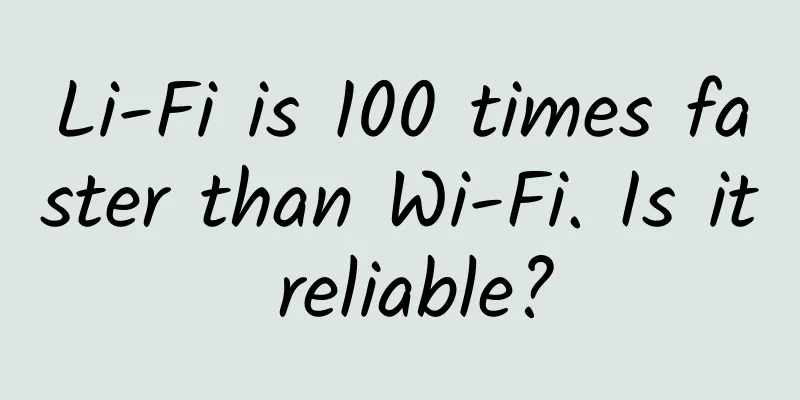New electromagnetic wave router will enable unlimited bandwidth

|
UCLA researchers, with support from the Defense Advanced Research Projects Agency, are developing a new type of electromagnetic wave router that will truly achieve ultra-high bandwidth. Our phones and computers use electromagnetic waves to send and receive information — and they also allow our devices to upload photos and download apps. But the bandwidth we can use on the current electromagnetic spectrum is limited.
Engineers imagined that if wireless devices could send and receive information on the same frequency, this limitation would be overcome. But this approach has its own problems. If electromagnetic waves are received and transmitted on the same frequency, they will usually interfere with each other. (This is when radio stations with the same frequency are close together and cause the signal to be interrupted.) A new device developed by UCLA electrical engineers could solve just that problem. The researchers demonstrated that a circulator -- a tiny device that sends and receives electromagnetic waves from different ports -- can use a single antenna to send and receive signals simultaneously, doubling the amount of spectrum space on a chip available to transmit data if the information is sent at the same frequency as it is received. A paper on this work was recently published in Scientific Reports, an open-source journal published by Nature magazine. Previous generations of circulators used magnetic materials and cannot be incorporated into current microchips, nor do they have enough bandwidth for today's smartphones and other devices. The prototype device built by UCLA uses coaxial cables to distribute the electromagnetic waves through non-magnetic materials, and in the future, such devices may eventually use silicon-based or other semiconductor materials. The key to the device's design is a method called "sequential switching delay lines," similar to how transportation engineers dispatch passenger trains from one track to another. This method allows multiple trains to enter and exit a train station at the same time and avoid collisions even when only a few tracks are available. "In a busy train station, trains are automatically switched to different tracks to minimize the time they have to stop to enter or leave the station. This is based on the same principle, using electromagnetic waves of the same frequency to transmit information in the chip," said the researcher who led the study. The team built a prototype using commercially available parts and is now testing it with a specially made chip. The design consists of six transmission lines, all of the same length, connected by five switches that open and close in sequence to distribute the electromagnetic waves, allowing data signals to be sent and received simultaneously. Previous studies have shown that using the same electromagnetic frequency to send and receive signals simultaneously can modulate the signal, but the researchers say the new design can achieve unprecedented bandwidth. It can be manufactured using current chip manufacturing processes and is compatible with almost all industry standard designs. Previous concepts required components that do not meet current industry standards or only operate in a narrow frequency band. The new circulator made at UCLA is able to operate from the first to the last frequencies of radio frequencies, and may even work in the visible part of the spectrum, the researchers said. "Like capacitors or resistors, such devices can route electromagnetic waves and are fundamental building blocks in a wide variety of circuits, and their ultra-high bandwidth could revolutionize the design of sensors in cell phones, cars and even quantum computers," the researchers said. The research team recently received $2.2 million from the Microsystems Technology Office of the Defense Advanced Research Projects Agency to develop components for microchips. (Cheng Dashu, China Shipbuilding Industry Comprehensive Technology and Economic Research Institute) |
<<: Technology “hidden” by life: WIFI
>>: I don't know the router's address.
Recommend
iWebFusion dedicated server starts from $49/month, 4-40 core CPU, 384G memory, NVMe hard disk, 1-10G bandwidth, multiple computer rooms in Los Angeles and other places
iWebFusion (formerly iWFHosting) is a hosting com...
A major technical challenge for container cloud platforms: Should the network choose SDN or underlay, or...?
[[320730]] How to choose the network when buildin...
South Korea's largest telecom operator's server failure caused widespread Internet outages
According to CCTV Finance, starting at 11:20 a.m....
A heated debate among various parties: How far are we from a 5G hit?
[Original article from 51CTO.com] Remember that t...
RAKsmart cluster server starts from $177.52/month, 5+253 IPs, San Jose/Los Angeles/Japan/Hong Kong data centers available
We have shared information about RAKsmart cloud s...
my country has built more than 2.93 million 5G base stations, and the number of 5G mobile phone users has reached 676 million.
July 19 news, at today's State Council Inform...
Simple test of BandwagonHost special price annual VPS (DC6)
Last time when BandwagonHost launched a special o...
[Christmas] Unesty VPS 50% off, €2.1/month-AMD Ryzen9/2GB/50G NVMe/1Gbps unlimited traffic
Unesty is a German hosting company founded in 201...
The three major telecom operators are accelerating the construction of 5G networks and data centers
Seizing the opportunity of the country's &quo...
How to compare the total cost of ownership of on-premises unified communications and unified communications as a service
While total cost of ownership (TCO) can be a usef...
Forcepoint releases 2017 cybersecurity predictions
[[179053]] Forcepoint , a global cybersecurity le...
Musk said: Satellite Internet will be publicly tested within 6 months! It will not be 6G that will subvert 5G
This article is reprinted with permission from AI...
China Mobile and China Broadcasting Corporation initiate strategic cooperation to jointly build and share 700MHz 5G network
On January 27, China Mobile and China Broadcastin...
5G has nothing to do with WiFi
A quick note: the Wi-Fi that all of our connected...
OneTechCloud Hong Kong/Japan/US CN2 GIA 10% off monthly payment and 20% off quarterly payment, optional native IP or high-defense VPS
OneTechCloud is a VPS hosting business that focus...









